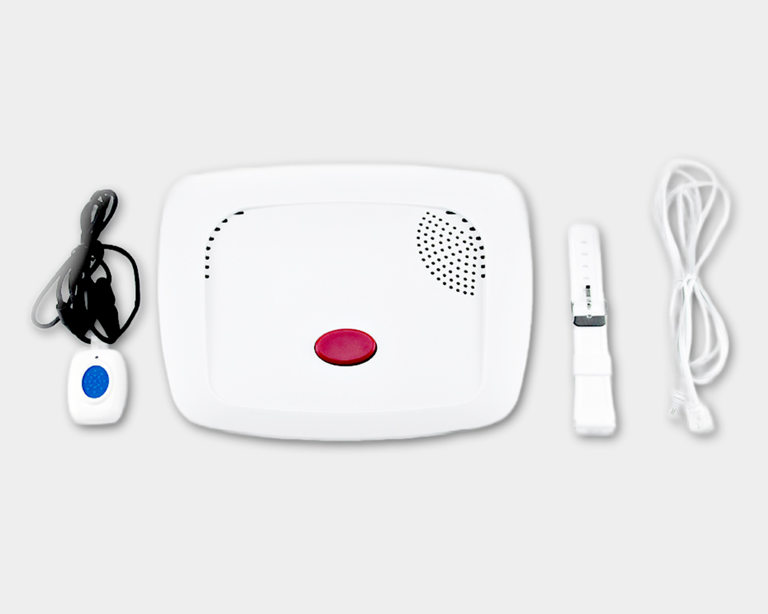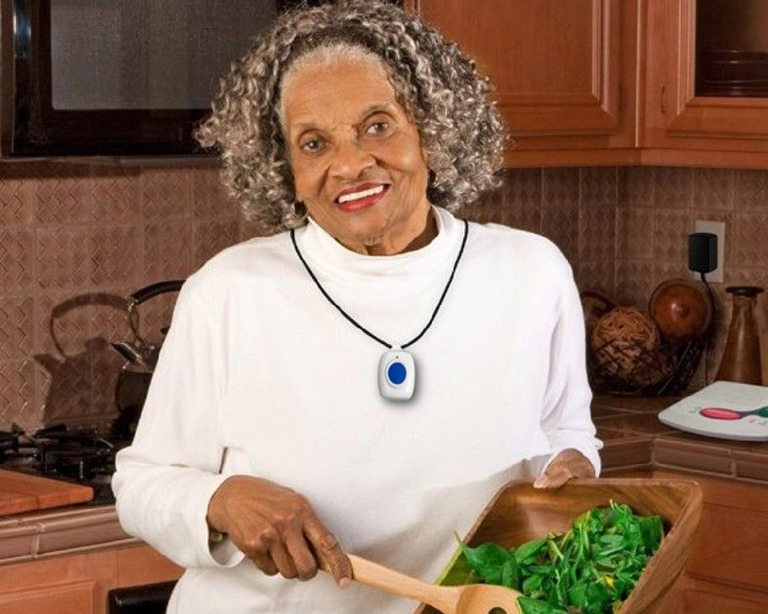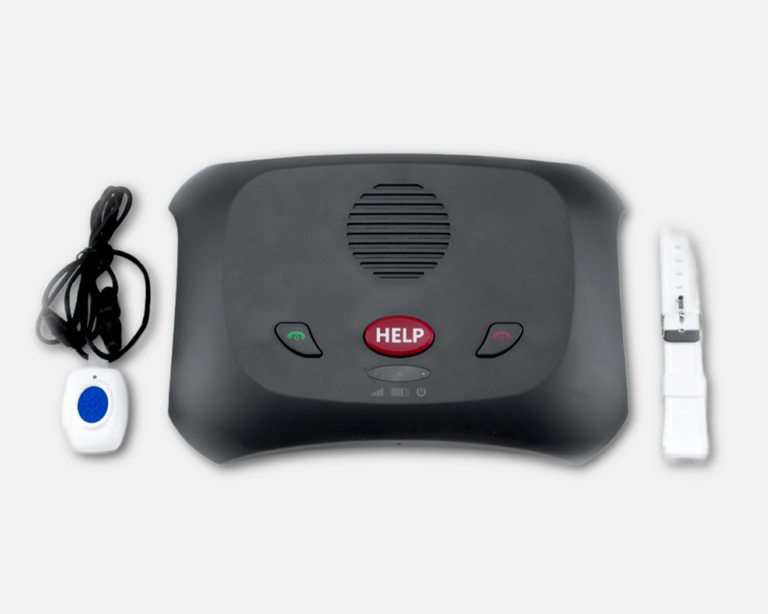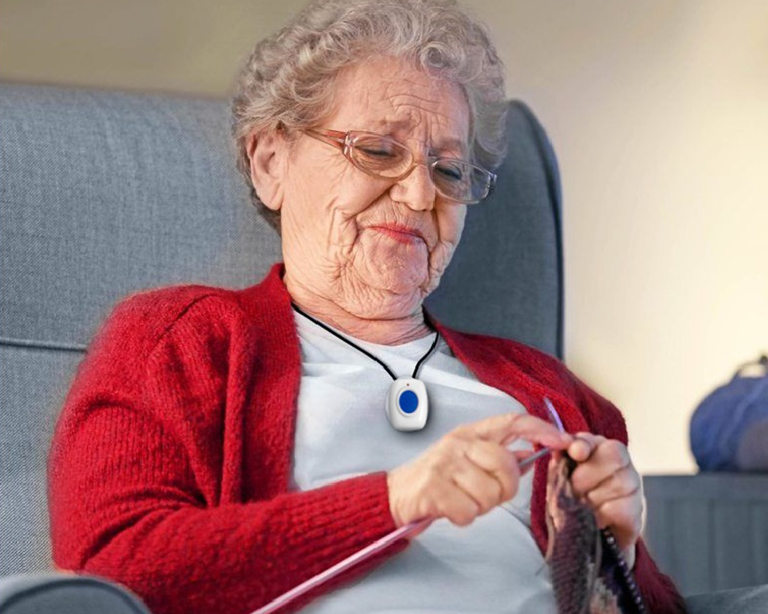

Call us 1-866-581-4540 for more information
Overnight shipping available!
No landline or internet connection required
- Phone Not Required
- Fall Detection Available
- Built-In Speaker
By |
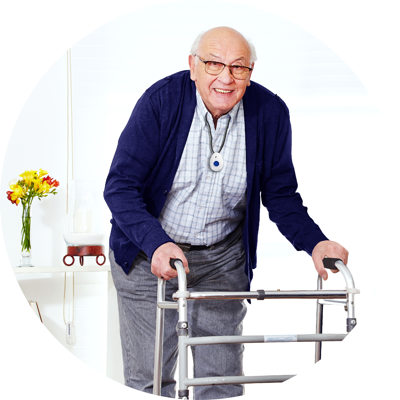
Updated 5/30/24
As we age, the possibility of sustaining grave injuries from a fall unfortunately increases. While most seniors are understandably concerned about the prospect of falling, many causes of falls are preventable, and senior fall alerts exist that can automatically send an alert for help if a fall is detected.
Seniors and elderly adults in the 65+ range are at the most at risk due to factors like declining health, diminished eyesight, and weakened bones. Falling not only affects the body, but it also changes the mind because many seniors who experience a fall become anxious and depressed. It is important to know the latest facts about falling in order to learn how to reduce your fall risk.
Facts & Statistics About Falling
These statistics illustrate how common falling is within the older population. This is why it is so important to take steps to prevent falls.
● You are 1.14 times more likely to fall if you lead a sedentary lifestyle.
● Chronic diseases like diabetes, hypertension, and cardiovascular disease increase the likelihood of falling.
● Every 19 minutes an elderly person dies from a fall.
● 25% of falls resulting in a hip fracture lead to death within six months.
● Malnutrition and low body weight is a significant risk factor for falling due to lessened strength and loss of bone mass.
● Some medications and sleep aids can cause dehydration, balance issues, and dizziness that increase the risk of falling.
● Medical alerts with built-in fall detection sensors can save lives by summoning help quickly in an emergency
Why Are Seniors at High Risk of Falling?
If an individual is taking multiple medications, the potential for adverse effects can disrupt their vision and cognitive functions. On average, a decline in vision is the most likely cause, and fall risk goes up.
How to Help Seniors Reduce Their Risk of Falling
Here are some tips for seniors to avoid spills:
- Exercise: This might be rehashing old news, but moving is a senior’s best friend. Aerobics, resistance training, and balance exercises that include core workouts offer a host of benefits.
Exercise keeps strength up, improves balance, and maintains bone mass. It can also reduce the need for medication and can improve one’s overall mood.
- Light Up the House: Night lights in crucial places will help with those late night visits to the loo. Light the hallways, the bathrooms and the bedroom to prevent falls in the dark. Using brighter and full spectrum lights will help to reduce any glare.
- Secure the Floors: Repair all loose stairs and floorboards. Secure all carpets and rugs with slip-resistant backing. Using non-slip mats in the bathtubs is a good practice as well.
- Wear Proper Shoes: They may not be the sexiest shoes, but orthopedic slip-resistant shoes are a valuable accessory. Secure footing is one of the best preventative measures to take to avoid falls.
Purchase shoes with the proper support for the Achilles heel and ankles. Wider shoes will provide more stability and comfort. Look for shoes that have nice padding in them. Your feet will thank you.
- Consult Your Doctor: Everyone ages differently, so enlisting your doctor’s advice is key. They are knowledgeable and can help you devise a focused plan to reduce your fall risk.
When speaking to your doctor, make sure to discuss medication side effects that can potentially alter motor functions. Discuss with your healthcare provider any changes or concerns you may have with your body. They are there to give you specific recommendations to keep you healthy, strong, and less at risk of falls.
Protect Yourself
Take the necessary precautions, such as selecting a medical alert system. It’ll help if you encounter any potential situations that could lead to a serious injury-causing fall and extend your quality of life.
Call us today at 1-866-581-4540 to get peace of mind with Alert1.
About the author
Since 1998, Visiting Angels has been providing in-home elder care services to families across the United States and is committed to helping loved ones continue to live at home.
Sources
https://www.ncbi.nlm.nih.gov/pmc/articles/PMC3863882/
https://www.ncoa.org/news/resources-for-reporters/get-the-facts/falls-prevention-facts/
http://www.comfortkeepers.com/home/info-center/senior-independent-living/seniors-and-falls-statistics-and-prevention
https://www.ncoa.org/healthy-aging/falls-prevention/preventing-falls-tips-for-older-adults-and-caregivers/6-steps-to-protect-your-older-loved-one-from-a-fall/
https://www.everydayhealth.com/longevity/future-planning/prevent-falls-at-home.aspx
